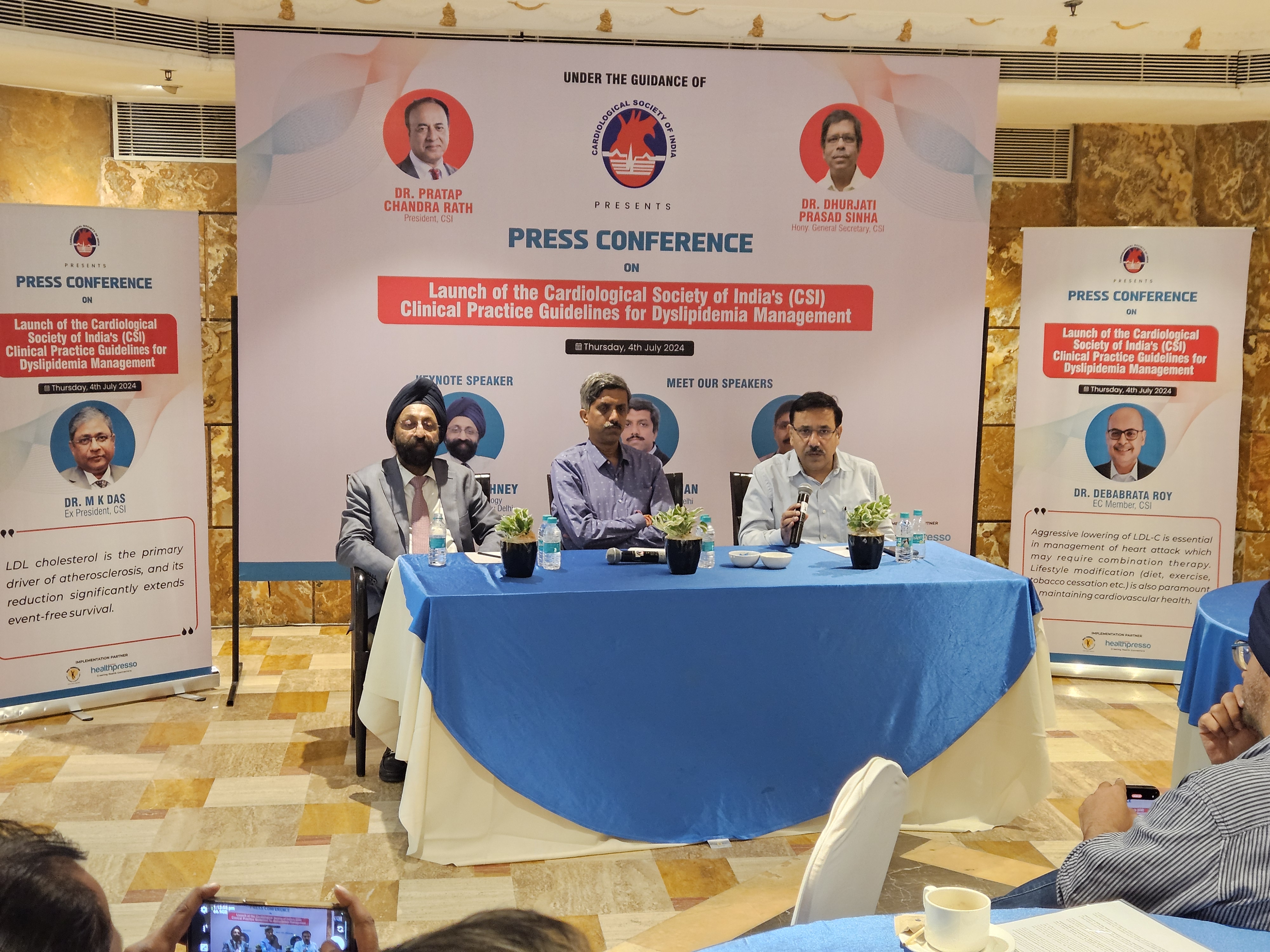
Cardiological Society of India Launches First-Ever National Guidelines for Dyslipidemia Management
In a landmark move, the Cardiological Society of India (CSI) has introduced the first set of national guidelines for managing dyslipidemia, a condition characterized by abnormal levels of lipids in the blood. This initiative, which incorporates extensive Indian data, aims to tackle the unique challenges and high prevalence of dyslipidemia across the country.
Dyslipidemia, defined by high levels of total cholesterol, elevated LDL-cholesterol (often referred to as "bad cholesterol"), high triglycerides, and low levels of HDL-cholesterol ("good cholesterol"), is a significant risk factor for cardiovascular diseases. These include heart attacks, strokes, and peripheral artery disease. The condition is alarmingly common in India, with notable differences in prevalence between states and particularly high rates in urban areas.
"Dyslipidemia is a silent killer, often symptomless, unlike hypertension and diabetes," warned Dr. Pratap Chandra Rath, President of CSI. He emphasized the importance of early detection and proactive management. The new guidelines recommend using non-fasting lipid measurements for risk assessment and treatment, moving away from the traditional fasting measurements. While elevated LDL-C remains the primary focus, for patients with high triglycerides (>150 mg/dL), non-HDL cholesterol becomes the key target.
Dr. Durjati Prasad Sinha, Hony. General Secretary of CSI, highlighted the convenience and accessibility of non-fasting lipid measurements. This approach encourages more people to get tested and treated. The guidelines suggest the first lipid profile should be done at age 18, or earlier for those with a family history of premature heart disease or familial hypercholesterolemia. They recommend that the general population and low-risk individuals maintain LDL-C levels below 100 mg/dL and non-HDL-C levels below 130 mg/dL. For high-risk individuals, such as those with diabetes or hypertension, the targets are stricter: LDL-C below 70 mg/dL and non-HDL-C below 100 mg/dL.
"Aggressive targets are suggested for very high-risk patients," explained Dr. J. P. S. Sawhney, Chairman of the Department of Cardiology at Sir Gangaram Hospital, New Delhi, and Chairman of the Lipid Guidelines. Patients with a history of heart attacks, angina, stroke, or chronic kidney disease should aim for LDL-C levels below 55 mg/dL or non-HDL levels below 85 mg/dL.
The guidelines also stress the importance of lifestyle modifications. Given Indian dietary habits, reducing sugar and carbohydrate intake is recommended, as these contribute more to arterial blockages than moderate fat consumption. Regular exercise and yoga, which offers cardioprotective benefits and is culturally relevant, are also advocated.
"High LDL-C and non-HDL-C can be controlled with a combination of statins and oral non-statin drugs. If goals are not met, injectable lipid-lowering drugs like PCSK9 inhibitors or Inclisiran are recommended," said Dr. S. Ramakrishnan, Professor of Cardiology at AIIMS, New Delhi, and co-author of the guidelines.
For patients with high triglycerides, lifestyle changes such as regular exercise, quitting alcohol and tobacco, and reducing sugar and carbohydrate intake are crucial. In those with heart disease, stroke, or diabetes, statins, non-statin drugs, and fish oil (EPA) are recommended. Triglyceride levels above 500 mg/dL require the use of medications like Fenofibrate, Saroglitazar, and fish oil.
Dr. Ashwani Mehta, Senior Consultant Cardiologist at Sir Ganga Ram Hospital, emphasized the genetic aspect of dyslipidemia in India. Genetic causes, such as familial hypercholesterolemia, are more common here than elsewhere. Early identification and treatment through cascade screening of family members is essential. The guidelines also recommend evaluating lipoprotein (a) levels at least once, as elevated levels are associated with cardiovascular disease. The prevalence of elevated lipoprotein (a) in India is higher (25%) compared to the Western world (15-20%).
The CSI's new guidelines provide healthcare providers with the tools to better manage cholesterol levels and combat heart disease in India, promoting healthier lives nationwide. The guidelines emphasize the importance of standardized lipid testing and treatment across the country, with clear targets based on individual risk profiles to avoid confusion among patients.